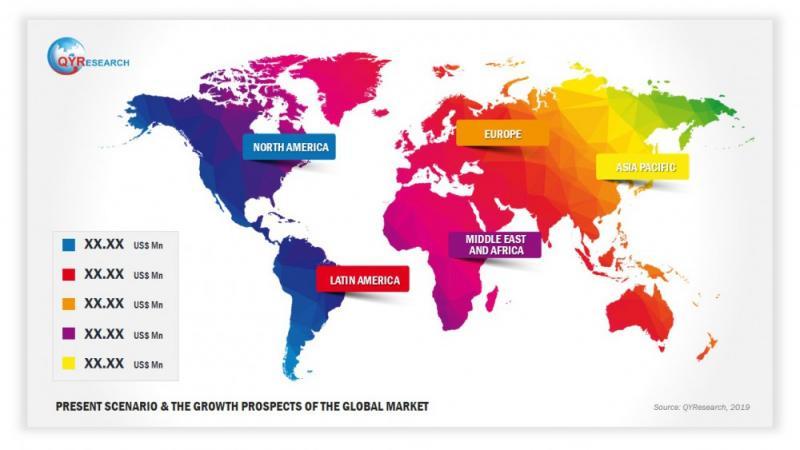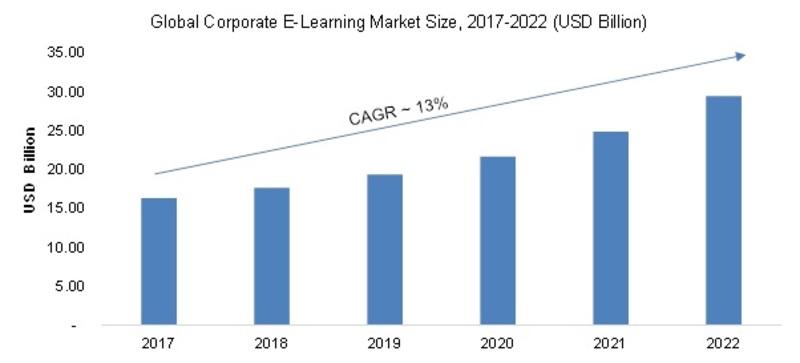Press release
Photoactive Materials Market Size is Anticipated to Reach USD 1.8 Billion, Expanding at a CAGR of 7.3% by 2034 | Transparency Market Research Inc.
The photoactive materials market is witnessing significant growth, driven by its crucial role in various cutting-edge technologies such as photovoltaics, photocatalysis, sensors, and optoelectronic devices. Photoactive materials are substances that undergo a physical or chemical change upon exposure to light, making them highly valuable in energy harvesting, environmental remediation, and advanced electronics. With increasing demand for renewable energy solutions, sustainable materials, and advanced optoelectronic devices, the market for photoactive materials is expected to experience robust growth in the coming years.
The global photoactive materials market is expanding due to the rising demand for solar energy and technological advancements in light-responsive devices. These materials are primarily used in solar cells, photodetectors, light-emitting devices, and photocatalysts. It is estimated to grow at a CAGR of 7.3% from 2024 to 2034 and reach US$ 1.8 Bn by the end of 2034.
Request a PDF Sample of this Report Now!
https://www.transparencymarketresearch.com/sample/sample.php?flag=S&rep_id=86360
Top Companies:
DKC (Kyung-In Synthetic Corporation)
Merck KGaA
DuPont
Solenis
BASF SE
Teijin Limited
Micron Technology, Inc.
Evergy Solar
First Solar
Nano Dimension
Key Market Drivers:
Growing Demand for Solar Energy: One of the most significant drivers of the photoactive materials market is the increasing global emphasis on renewable energy sources. Photoactive materials are essential for solar panels and photovoltaic cells, converting sunlight into electricity. With governments and organizations pushing for a transition to green energy, the solar energy industry is experiencing rapid growth. This, in turn, is driving demand for efficient, low-cost, and scalable photoactive materials, such as perovskite solar cells, which offer higher efficiency rates compared to traditional silicon-based solar cells.
Advancements in Optoelectronics: The optoelectronics industry, which includes devices such as LEDs, photodetectors, and lasers, is another major driver. Photoactive materials play a crucial role in light emission and detection technologies, allowing for better performance in displays, sensors, and communication systems. The continuous demand for high-performance displays in smartphones, televisions, and wearable devices is boosting research into novel photoactive compounds that offer better brightness, efficiency, and longevity.
Photocatalysis for Environmental Applications: Environmental concerns are also driving the market for photoactive materials, especially in photocatalysis. Photoactive materials are used in water purification, air filtration, and self-cleaning surfaces. They help in breaking down pollutants when exposed to light, offering a sustainable solution for environmental remediation. With increasing focus on reducing pollution and improving water and air quality, the demand for photocatalytic materials like titanium dioxide is rising.
Emerging Applications in Healthcare: The healthcare sector is exploring the use of photoactive materials in biomedical devices and therapeutics. These materials are being developed for use in photodynamic therapy (PDT), where light-activated compounds are used to target and destroy cancer cells. Additionally, photoactive materials are being integrated into biosensors for medical diagnostics, offering non-invasive ways to monitor health conditions. The ongoing research in this area is expected to expand the use of photoactive materials in healthcare, contributing to market growth.
Technological Advancements in Organic and Hybrid Materials: The development of organic photoactive materials and hybrid materials like perovskites is opening new opportunities in the market. Organic materials, known for their flexibility, tunability, and lightweight nature, are being used in organic photovoltaics (OPVs) and flexible electronics. Perovskites, in particular, have shown tremendous potential in boosting the efficiency of solar cells while being cost-effective and easy to produce. The continuous research and development (R&D) in hybrid materials are expected to disrupt the traditional materials market, offering higher performance and broader applications.
Recent Developments:
Breakthroughs in Perovskite Solar Cells: Recent advancements in perovskite solar cells have led to significant improvements in their efficiency and stability. Research is focused on overcoming challenges like moisture sensitivity and material degradation, which have historically limited the commercial viability of perovskites. The introduction of more stable and durable formulations is bringing perovskite-based photoactive materials closer to commercial deployment in large-scale solar energy projects.
Integration of Quantum Dots in Displays: Quantum dots, a type of photoactive material, are gaining traction in the display industry due to their superior color purity and energy efficiency. Major tech companies are integrating quantum dots into high-resolution displays for televisions, monitors, and smartphones. This is enhancing the demand for photoactive materials capable of producing better brightness and color accuracy in consumer electronics.
Self-Cleaning and Antibacterial Surfaces: Photoactive materials are increasingly being used in the production of self-cleaning surfaces and antibacterial coatings. These surfaces, which utilize photocatalytic reactions to break down organic materials and kill bacteria upon exposure to light, are being applied in sectors such as healthcare, automotive, and construction. With growing concerns about hygiene and cleanliness, especially in public and medical spaces, these innovations are driving the demand for photoactive materials.
Challenges:
Stability and Durability Issues: One of the main challenges in the photoactive materials market, particularly for emerging materials like perovskites, is their stability. Many photoactive materials degrade when exposed to environmental factors such as moisture, oxygen, or high temperatures, which limits their long-term use in commercial applications. Research is ongoing to develop more stable compounds that can withstand harsh conditions without losing their functionality.
High Production Costs: While photoactive materials have enormous potential, the cost of production remains high, particularly for advanced materials like quantum dots and perovskites. The development of scalable, low-cost manufacturing processes is essential for the widespread adoption of these materials. Reducing the cost of production without compromising efficiency or performance is a significant challenge for the industry.
Complex Manufacturing Processes: The production of photoactive materials often involves complex processes that require precision and control at the molecular level. For example, the fabrication of high-performance perovskite solar cells or quantum dot displays necessitates sophisticated equipment and precise conditions. Simplifying these manufacturing processes while maintaining material quality is a major hurdle in the commercial scalability of photoactive materials.
Unlock Growth Potential in Your Industry! Download PDF Brochure: https://www.transparencymarketresearch.com/sample/sample.php?flag=S&rep_id=86360
Key Segmentation:
By Material Type
Organic Photoactive Materials
Inorganic Photoactive Materials
By Application
Photovoltaics
Medical Devices
Sensors and Detectors
Optoelectronics
Consumer Electronics
Automotive
Industrial Processes
Others
By End-use
Electric & Electronics
Energy
Pharmaceuticals
Consumer Goods
Industrial
Others
By Region
North America
Europe
Asia Pacific
Middle East & Africa
South America
Buy this Premium Research Report: https://www.transparencymarketresearch.com/checkout.php?rep_id=86360<ype=S
Conclusion: The photoactive materials market is poised for significant growth, driven by the increasing demand for renewable energy, advancements in optoelectronics, and environmental sustainability. Solar energy remains the dominant application, but emerging sectors such as healthcare and flexible electronics are also contributing to the market's expansion.
Explore More Trending Report:
Smart Carbon Market: https://www.prnewswire.co.uk/news-releases/smart-carbon-market-to-attain-value-of-us-12-bn-by-2031-tmr-study-301664462.html
Hexane Market: https://www.globenewswire.com/news-release/2022/09/06/2510751/0/en/Hexane-Market-is-Projected-to-Gain-a-Valuation-of-US-2-9-Bn-by-2031-TMR-Study.html
About Transparency Market Research
Transparency Market Research, a global market research company registered at Wilmington, Delaware, United States, provides custom research and consulting services. Our exclusive blend of quantitative forecasting and trends analysis provides forward-looking insights for thousands of decision makers. Our experienced team of Analysts, Researchers, and Consultants use proprietary data sources and various tools & techniques to gather and analyses information.
Our data repository is continuously updated and revised by a team of research experts, so that it always reflects the latest trends and information. With a broad research and analysis capability, Transparency Market Research employs rigorous primary and secondary research techniques in developing distinctive data sets and research material for business reports.
Contact Us:
Transparency Market Research Inc.
CORPORATE HEADQUARTER DOWNTOWN,
1000 N. West Street,
Suite 1200, Wilmington, Delaware 19801 USA
Tel: +1-518-618-1030
USA - Canada Toll Free: 866-552-3453
The global photoactive materials market is expanding due to the rising demand for solar energy and technological advancements in light-responsive devices. These materials are primarily used in solar cells, photodetectors, light-emitting devices, and photocatalysts. It is estimated to grow at a CAGR of 7.3% from 2024 to 2034 and reach US$ 1.8 Bn by the end of 2034.
Request a PDF Sample of this Report Now!
https://www.transparencymarketresearch.com/sample/sample.php?flag=S&rep_id=86360
Top Companies:
DKC (Kyung-In Synthetic Corporation)
Merck KGaA
DuPont
Solenis
BASF SE
Teijin Limited
Micron Technology, Inc.
Evergy Solar
First Solar
Nano Dimension
Key Market Drivers:
Growing Demand for Solar Energy: One of the most significant drivers of the photoactive materials market is the increasing global emphasis on renewable energy sources. Photoactive materials are essential for solar panels and photovoltaic cells, converting sunlight into electricity. With governments and organizations pushing for a transition to green energy, the solar energy industry is experiencing rapid growth. This, in turn, is driving demand for efficient, low-cost, and scalable photoactive materials, such as perovskite solar cells, which offer higher efficiency rates compared to traditional silicon-based solar cells.
Advancements in Optoelectronics: The optoelectronics industry, which includes devices such as LEDs, photodetectors, and lasers, is another major driver. Photoactive materials play a crucial role in light emission and detection technologies, allowing for better performance in displays, sensors, and communication systems. The continuous demand for high-performance displays in smartphones, televisions, and wearable devices is boosting research into novel photoactive compounds that offer better brightness, efficiency, and longevity.
Photocatalysis for Environmental Applications: Environmental concerns are also driving the market for photoactive materials, especially in photocatalysis. Photoactive materials are used in water purification, air filtration, and self-cleaning surfaces. They help in breaking down pollutants when exposed to light, offering a sustainable solution for environmental remediation. With increasing focus on reducing pollution and improving water and air quality, the demand for photocatalytic materials like titanium dioxide is rising.
Emerging Applications in Healthcare: The healthcare sector is exploring the use of photoactive materials in biomedical devices and therapeutics. These materials are being developed for use in photodynamic therapy (PDT), where light-activated compounds are used to target and destroy cancer cells. Additionally, photoactive materials are being integrated into biosensors for medical diagnostics, offering non-invasive ways to monitor health conditions. The ongoing research in this area is expected to expand the use of photoactive materials in healthcare, contributing to market growth.
Technological Advancements in Organic and Hybrid Materials: The development of organic photoactive materials and hybrid materials like perovskites is opening new opportunities in the market. Organic materials, known for their flexibility, tunability, and lightweight nature, are being used in organic photovoltaics (OPVs) and flexible electronics. Perovskites, in particular, have shown tremendous potential in boosting the efficiency of solar cells while being cost-effective and easy to produce. The continuous research and development (R&D) in hybrid materials are expected to disrupt the traditional materials market, offering higher performance and broader applications.
Recent Developments:
Breakthroughs in Perovskite Solar Cells: Recent advancements in perovskite solar cells have led to significant improvements in their efficiency and stability. Research is focused on overcoming challenges like moisture sensitivity and material degradation, which have historically limited the commercial viability of perovskites. The introduction of more stable and durable formulations is bringing perovskite-based photoactive materials closer to commercial deployment in large-scale solar energy projects.
Integration of Quantum Dots in Displays: Quantum dots, a type of photoactive material, are gaining traction in the display industry due to their superior color purity and energy efficiency. Major tech companies are integrating quantum dots into high-resolution displays for televisions, monitors, and smartphones. This is enhancing the demand for photoactive materials capable of producing better brightness and color accuracy in consumer electronics.
Self-Cleaning and Antibacterial Surfaces: Photoactive materials are increasingly being used in the production of self-cleaning surfaces and antibacterial coatings. These surfaces, which utilize photocatalytic reactions to break down organic materials and kill bacteria upon exposure to light, are being applied in sectors such as healthcare, automotive, and construction. With growing concerns about hygiene and cleanliness, especially in public and medical spaces, these innovations are driving the demand for photoactive materials.
Challenges:
Stability and Durability Issues: One of the main challenges in the photoactive materials market, particularly for emerging materials like perovskites, is their stability. Many photoactive materials degrade when exposed to environmental factors such as moisture, oxygen, or high temperatures, which limits their long-term use in commercial applications. Research is ongoing to develop more stable compounds that can withstand harsh conditions without losing their functionality.
High Production Costs: While photoactive materials have enormous potential, the cost of production remains high, particularly for advanced materials like quantum dots and perovskites. The development of scalable, low-cost manufacturing processes is essential for the widespread adoption of these materials. Reducing the cost of production without compromising efficiency or performance is a significant challenge for the industry.
Complex Manufacturing Processes: The production of photoactive materials often involves complex processes that require precision and control at the molecular level. For example, the fabrication of high-performance perovskite solar cells or quantum dot displays necessitates sophisticated equipment and precise conditions. Simplifying these manufacturing processes while maintaining material quality is a major hurdle in the commercial scalability of photoactive materials.
Unlock Growth Potential in Your Industry! Download PDF Brochure: https://www.transparencymarketresearch.com/sample/sample.php?flag=S&rep_id=86360
Key Segmentation:
By Material Type
Organic Photoactive Materials
Inorganic Photoactive Materials
By Application
Photovoltaics
Medical Devices
Sensors and Detectors
Optoelectronics
Consumer Electronics
Automotive
Industrial Processes
Others
By End-use
Electric & Electronics
Energy
Pharmaceuticals
Consumer Goods
Industrial
Others
By Region
North America
Europe
Asia Pacific
Middle East & Africa
South America
Buy this Premium Research Report: https://www.transparencymarketresearch.com/checkout.php?rep_id=86360<ype=S
Conclusion: The photoactive materials market is poised for significant growth, driven by the increasing demand for renewable energy, advancements in optoelectronics, and environmental sustainability. Solar energy remains the dominant application, but emerging sectors such as healthcare and flexible electronics are also contributing to the market's expansion.
Explore More Trending Report:
Smart Carbon Market: https://www.prnewswire.co.uk/news-releases/smart-carbon-market-to-attain-value-of-us-12-bn-by-2031-tmr-study-301664462.html
Hexane Market: https://www.globenewswire.com/news-release/2022/09/06/2510751/0/en/Hexane-Market-is-Projected-to-Gain-a-Valuation-of-US-2-9-Bn-by-2031-TMR-Study.html
About Transparency Market Research
Transparency Market Research, a global market research company registered at Wilmington, Delaware, United States, provides custom research and consulting services. Our exclusive blend of quantitative forecasting and trends analysis provides forward-looking insights for thousands of decision makers. Our experienced team of Analysts, Researchers, and Consultants use proprietary data sources and various tools & techniques to gather and analyses information.
Our data repository is continuously updated and revised by a team of research experts, so that it always reflects the latest trends and information. With a broad research and analysis capability, Transparency Market Research employs rigorous primary and secondary research techniques in developing distinctive data sets and research material for business reports.
Contact Us:
Transparency Market Research Inc.
CORPORATE HEADQUARTER DOWNTOWN,
1000 N. West Street,
Suite 1200, Wilmington, Delaware 19801 USA
Tel: +1-518-618-1030
USA - Canada Toll Free: 866-552-3453
Permanent link to this press release:
Copy
Please set a link in the press area of your homepage
to this press release on woodPRI. woodPRI disclaims liability for any content contained in
this release.
Recommend

/newsMicroencapsulation Market Deep Analysis on Key Players - Dow Corning, Encapsys, Syngenta Crop Protection, Evonik Industries, 3M and Bayer
Market Study Report Adds Global Microencapsulation Market Size, Status and Forecast 2024 added to its database. The report provides key statistics on the current state of the industry and other analytical data to understand the market.
Extensive research is required for choosing the appropriate cor...

/newsGermany Airbag Market Size 2023: Global Share, Industry And Report Analysis By 2030 | Hyundai Mobis Co., Ltd. Key Safety Systems, Inc. Robert Bosch GmbH
Germany airbag market is expected to grow at a CAGR of around 6% during the forecast period. Germany Airbag Market research report refers to gathering and analyzing significant market data serve as best medium for various industry players to launch novel product or service. It is vital for key firms...

/newsSecurities Brokerages And Stock Exchanges Market Outlook 2021: Big Things are Happening
A new intelligence report released by HTF MI with title "Global Securities Brokerages And Stock Exchanges Market Survey & Outlook" is designed covering micro level of analysis by Insurers and key business segments, offerings and sales channels. The Global Securities Brokerages And Stock Exchange...

/newsRenewable Chemicals Market Emerging Trends and Competitive Landscape Forecast to 2028
The renewable chemicals market was valued at US$ 80,566.30 million in 2021 and is projected to reach US$ 1,76,750.76 million by 2028 it is expected to grow at a CAGR of 11.9% from 2021 to 2028. The research report focuses on the current market trends, opportunities, future potential of the market, a...

/newsHow Coronavirus is Impacting Cold Brew Coffee, Global Market Volume Analysis, Size, Share and Key Trends 2020-2026
"Market Latest Research Report 2020:
Los Angles United States, February 2020: The Cold Brew Coffee market has been garnering remarkable momentum in the recent years. The steadily escalating demand due to improving purchasing power is projected to bode well for the global market. QY Research's lates...

/newsCorporate E-Learning Market - Global Industry Size, Share, Key Players Analysis that are Infor, SkillSoft Corporation, Adrenna, CERTPOINT Systems and others with Regional Forecast to 2022
Overview:
E-Learning is used to enhance the learning procedures for newer job requirements and to make employees sound about the internal and external changes in the market and respective organizations. This method has created considerable differences in the ways of training and developing employee...
